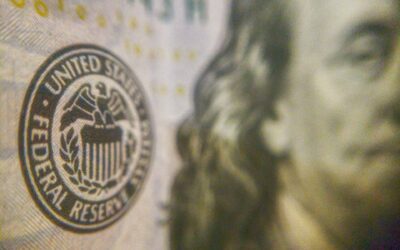In a recent interview with Liberty and Finance, Robert Kientz of The Freedom Report delivered a sobering analysis of the global financial landscape—one that points to both a resurgence of gold and silver and an alarming advance toward centralized digital control through Central Bank Digital Currencies (CBDCs) and digital IDs.
A Quiet Revolution in the Global Financial Order
Kientz described an unfolding monetary transformation driven by policies like Basel III, which now recognizes gold as a High-Quality Liquid Asset (HQLA)—effectively putting it on the same level as cash for central banks. This change has spurred massive gold acquisitions by governments worldwide, signaling what Kientz believes will be a historic realignment.
“We’re moving toward a world where everything will be measured in gold,” he explained.
This shift comes amid the waning influence of the U.S. dollar as the world’s reserve currency. Kientz noted that for the first time in modern history, less than half of all foreign-held reserves are denominated in dollars—an unmistakable sign that the dollar’s dominance is eroding.
Market Manipulation and the Paper Gold Problem
While Kientz remains bullish on the long-term value of gold and silver, he warned that the short-term pricing of these metals is largely artificial—dictated not by supply and demand, but by a heavily leveraged paper market.
“The prices of commodities are determined in the derivative markets,” he said, referring to the COMEX in the U.S. and the over-the-counter (OTC) markets in London.
In these systems, there are far more contracts for gold and silver than there is actual metal available. Kientz identified major banks—such as Bank of America, HSBC, and Citigroup—as holding the majority of these short positions, often acting on behalf of powerful institutional clients and even sovereign states.
He recalled how JPMorgan was fined for manipulating the silver and Treasury markets, earning billions from such schemes. “They make a billion dollars a year on these types of trades,” he stated, underscoring the scale of the manipulation.
Silver’s past price spikes, particularly when it crossed $50 per ounce, triggered swift reactions from regulators and industrial stakeholders alike. Kientz suggested that authorities actively suppress silver prices to maintain low industrial costs and protect the dollar’s perceived strength. In a telling move, the U.S. government recently designated silver as a critical mineral and committed over $4.5 billion to domestic mining initiatives.
The Digital Currency Trap
Beyond precious metals, Kientz issued perhaps his most dire warning: the rapid global rollout of CBDCs and digital ID systems. He described these initiatives as tools for consolidating control over personal finance and freedom.
“The CBDC system is the mechanism that lets them reset the gold price and write off old debts,” he explained.
Kientz highlighted how digital IDs are being introduced at an unprecedented pace—jumping from 17 to 27 nations in just a few months. He pointed to examples like Vietnam, where citizens without a government-issued digital ID cannot hold jobs or access their bank accounts.
Such developments, he warned, pave the way for an era of total financial surveillance. Once biometric data, digital identification, and programmable currency converge, citizens could face restrictions on what they buy—or even have their assets seized—with the press of a button.
“You now have a system that ties your biometrics to everything you use,” Kientz cautioned.
He projected that the global CBDC framework could be fully operational by 2028.
Protecting Wealth and Freedom
Kientz’s advice for those seeking financial sovereignty is straightforward: accumulate physical gold and silver—particularly during market dips. He also encouraged buyers to look beyond popular sovereign coins like the American Silver Eagle, which carry steep premiums, and instead consider “junk silver” (pre-1965 U.S. coinage) or generic bars for better value.
Finally, Kientz called for civic engagement. “It only takes a consistent vocal minority going to their state houses,” he said, urging citizens to educate their local representatives about the risks of CBDCs and digital IDs. Many lawmakers, he argued, are unaware of the sweeping financial systems being implemented at the global level.
The Bottom Line
Robert Kientz’s message is clear: a new economic era is emerging, one defined by the revaluation of gold and silver—and the potential loss of financial freedom. Whether investors and citizens act now or wait for the system to be in place could determine not just their wealth, but their autonomy in the years to come.







